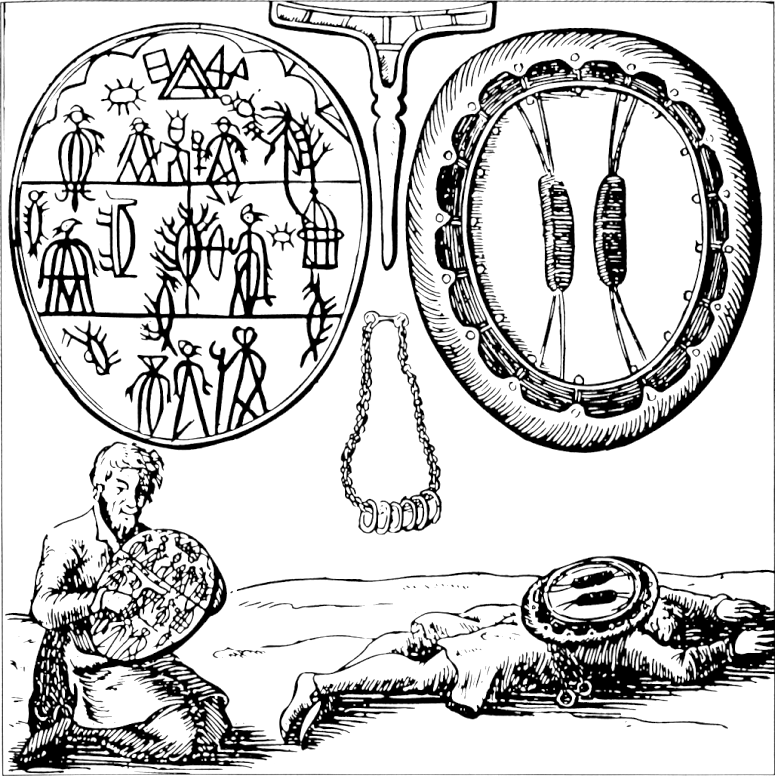The History of Lapland
Written by John Scheffer
Oxford 1674
The illustrations in the 1674 English translation of the book are imitations of those in the Latin source text from 1673. Apart from being mirror-images of the originals, some noteworthy changes were made; a few of these are commented below. As in the main text, I have here reversed the English illustrations back to their intended orientation, and then individually reversed all letters in the legends, as well as colouring these and any scale bars red.
Chapter X contains two illustrations depicting the worship of idols, both loosely based on drawings accompanying the account of Samuel Rheen, one of Schefferus’ most important contributors. In the Latin original, the idols’ heads are crudely shaped just as described in the text, but in contrast to the drawings in Rheen’s account. Unlike the source’s multiple idols, there are here only one idol in each picture. Their English counterparts have been changed to reintroduce clearly visible facial features, contrary to the description, but as the other major reworkings are retained, this can not have been done as a result of going back to the source material.
In the illustration representing Thor (Tiermes), the
text says that he has a hammer [in] his right hand
. In the original
illustration it is either erroneously placed in the idol’s left hand (to
the observer’s right), or the idol must be supposed to face away from the
worshipper and the sacrifice. In the English version, a face is added to
the Idol making the latter interpretation impossible here, but the usual
reversal of the illustration also inadvertently changes the hand with the
hammer to the right side of the idol (though it is here reversed back
again).
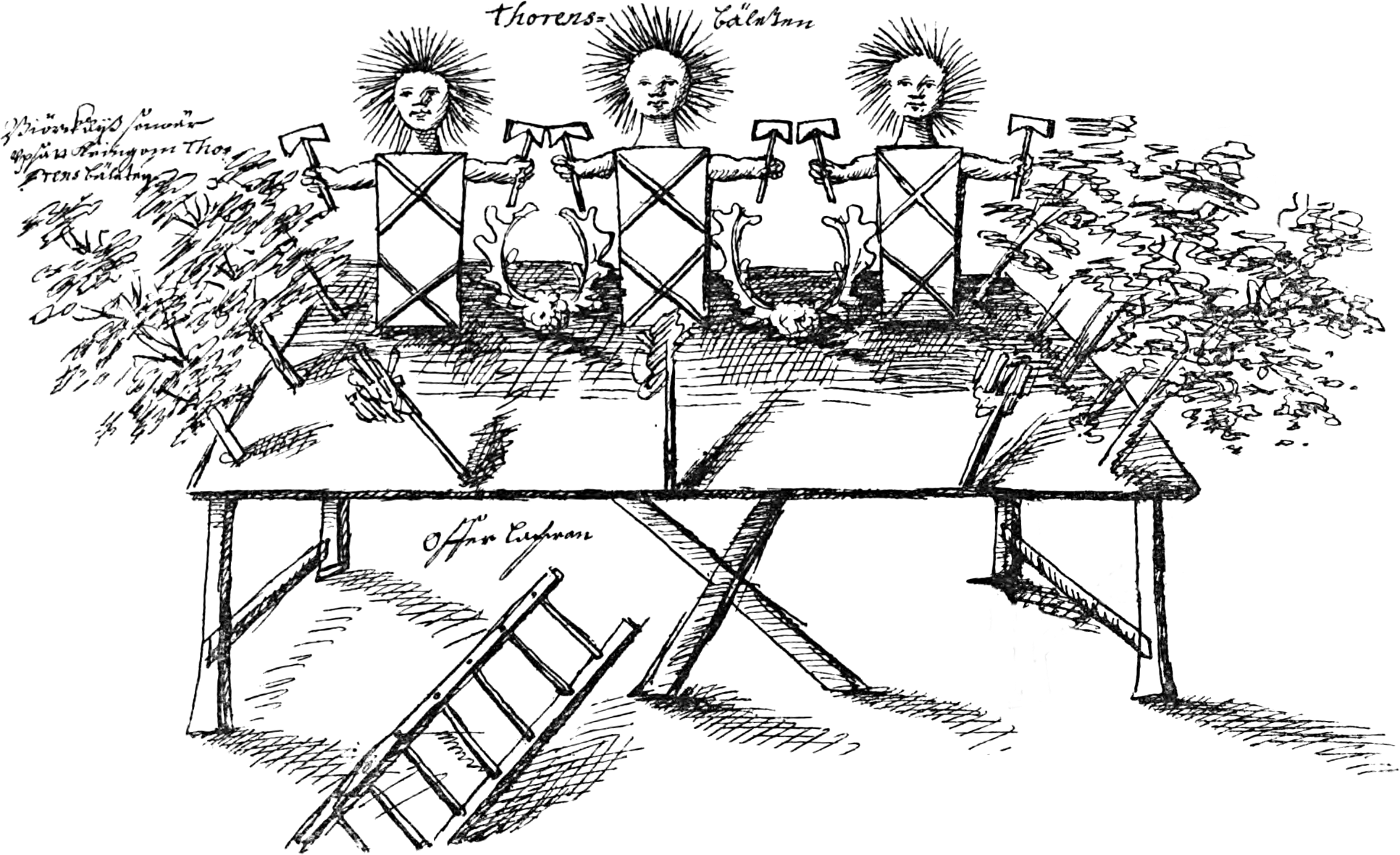
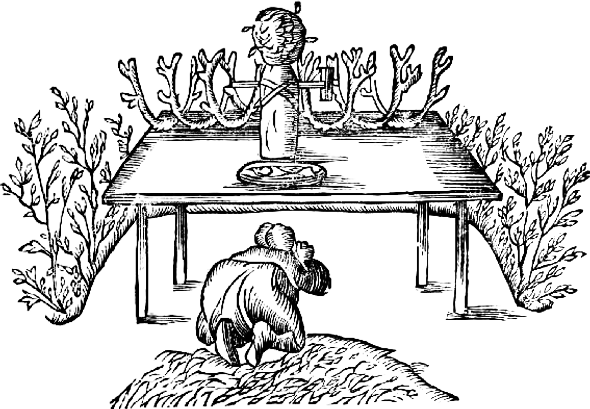
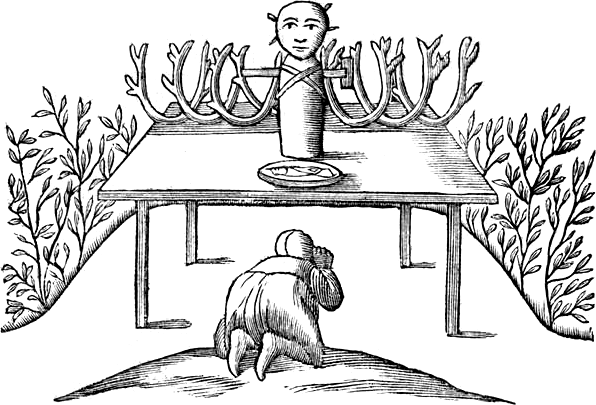
The English version of the worship of the Storjunkar idol has some background scenery cut away to avoid having to rotate the image 90 degrees in order to fit onto the page as in the Latin original. The changes from Rheen’s source drawing is more profound here than in any of the other drawings.
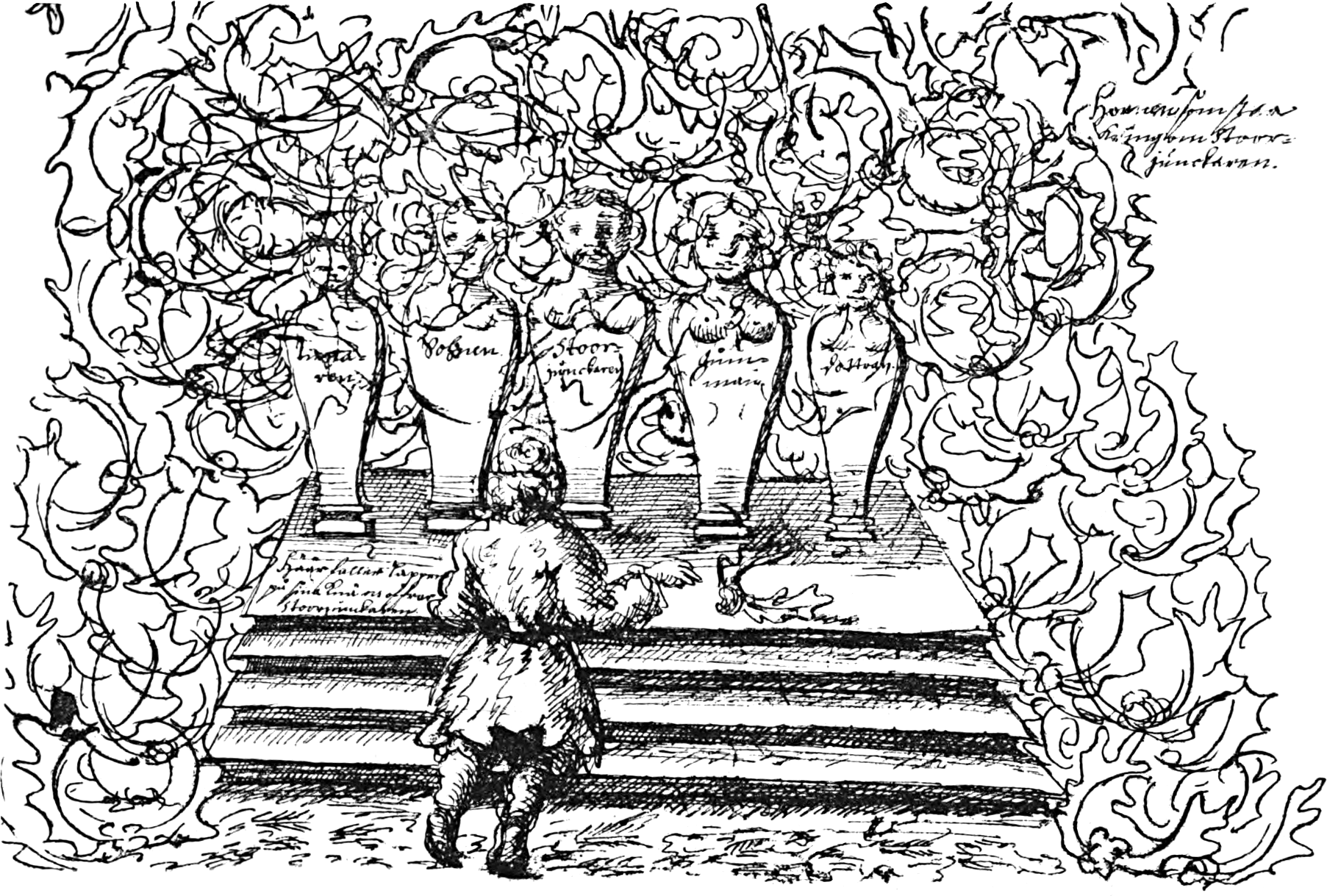
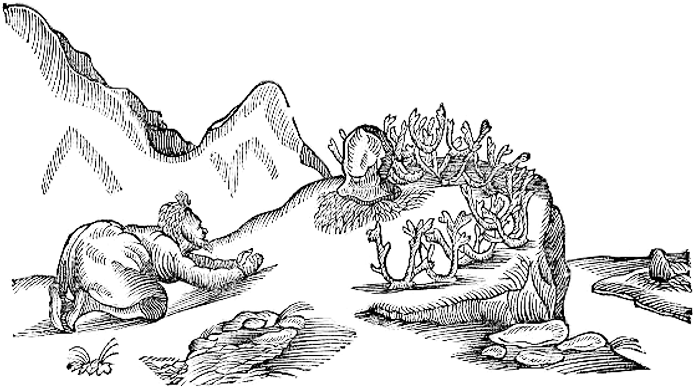
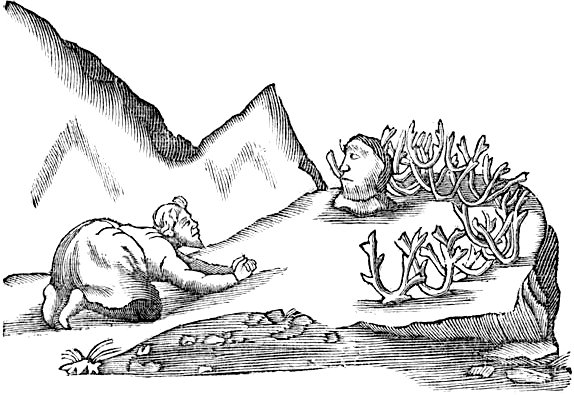
Chapter XI contains pictures of several drums, some lost and some still surviving. Comparison with the surviving drums give a favourable verdict on the accuracy of the drawings, but unfortunately the pictures of the lost drums seem to be made on the basis of inaccurate drawings, and not of original drums.
Drum A in particular is demonstrably highly inaccurate. It utilises the
typical early modern European naïve way of drawing the sun and the moon
with facial features which is unknown from any Sámi drum and wholly alien
to the entire scope of their style. Similarly the humanoid figures are
also atypically given facial features. Equally distorted are the
depictions of animals and water. Here too a naïve superficial resemblance
of shape has supplanted the deeper
way of representation common in
many drums, where an often simpler and more abstract representation is
used, and small but keenly observed details or abstract attributions
determine what it denotes.
Schefferus seems to have been aware of this, though. Here too, his source is a drawing from Rheen’s account. This drawing has the same weaknesses to a significantly larger degree. Schefferus’ drawing is highly inaccurate as a representation of its source; the reason is of course that he knew enough about Sámi drums to see that Rheens drawing was visually hardly even similar to its source, but rather an interpretation of it. He then proceeded to try to undo this damage by simplifying the figures to something at least approaching the style of a real drum.
In drum B, the clumsy lettering of the Latin original has caused
several problems in the English version. While each of the three
zig-zags on the horizontal dividing line has been correctly identified
as the letter h
, one of them has also been copied as a part of
the drum decoration (shown in green here, corrected in the main text).
Further, the letter r
is erroneously interpreted as u
; for
most of the following letters, the original is very confusing: it has
one fewer letter than the translation, t
and x
cannot be
distinguished, and it has two letters that each could be intended as
u
, y
or γ
. In the English version attempts to
sort this out have been made, but it is uncertain whether or not these
clarifications truly represent the original intent.
Similarly, the accessories in illustrations G and H are drawn more elegantly in the English version, but as there is no reason to believe that this is based on a reexamination of the original objects, they cannot be regarded as equally accurate.
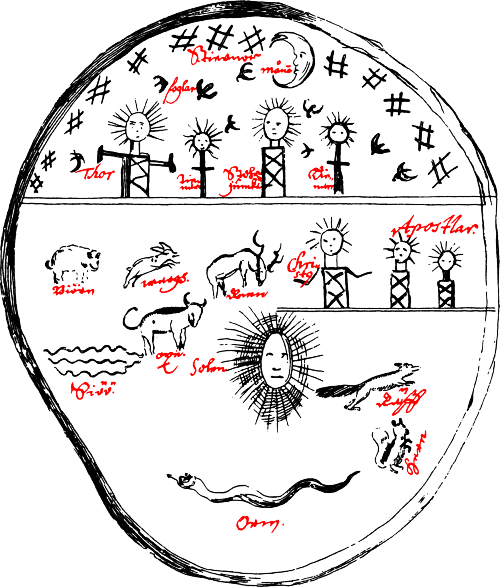
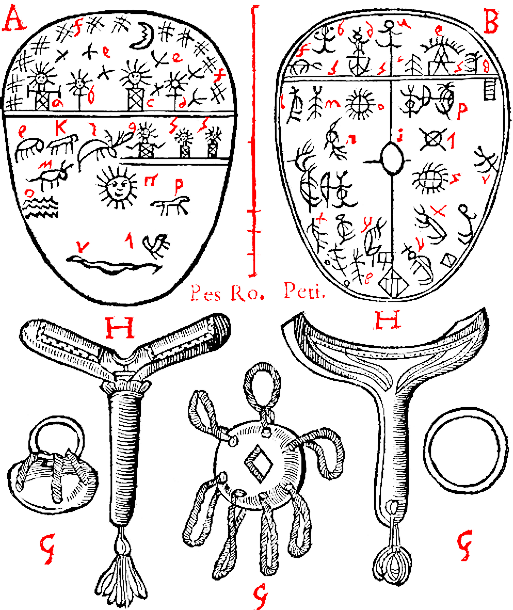
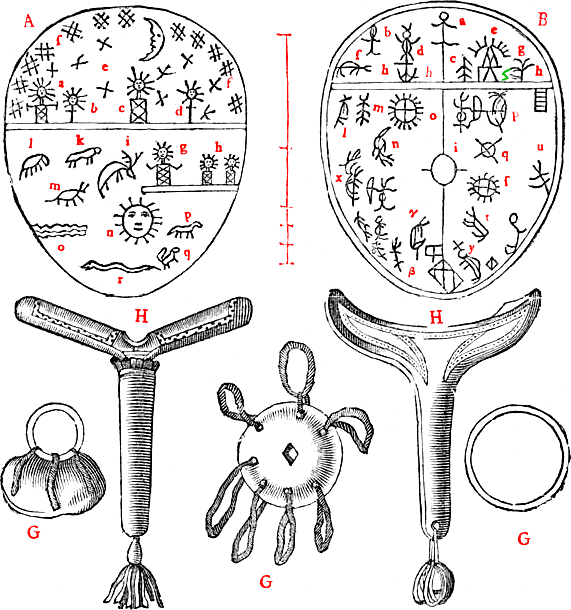
In the illustration showing a noaidi first using his drum, then afterwards lying in a trance with the drum on his back, Schefferus again corrects a drawing by Rheen based on more reliable information. In the left-hand side of the source image, the noaidi holds a carpenter’s hammer high in the air, as if ready to punch a hole in the drum, which has the same highly interpreted decoration as in the previously discussed image. Schefferus corrects both the look of hammer and the way it is used, adds a brass pointer and changes the drum design to something bearing a passing resemblance to an actual drum. Apart from the hammer-wielding hand, the noaidi’s posture is slightly changed to look less aggressive and more relaxed, and similarily his facial expression is made less intense and more serene. Further, his costume is altered and the amount of facial hair is reduced. On the right-hand side the orientation of the drum is corrected from skin-side up to skin-side down. More significantly, he leaves out the devil standing behind the noaidi (or possibly the evil spirit rising from his body?), which the clergyman Rheen thought necessary to include so as to leave no doubt to the diabolical nature he ascribed to this practice.
The English version is again somewhat more elegantly executed. In addition, it shows a subtle but significant improvement: in the Latin version, the top end of the drum is slightly more pointed than the bottom, whereas the opposite is the case in the English version, as it is in most if not all drums showing such an asymmetry.
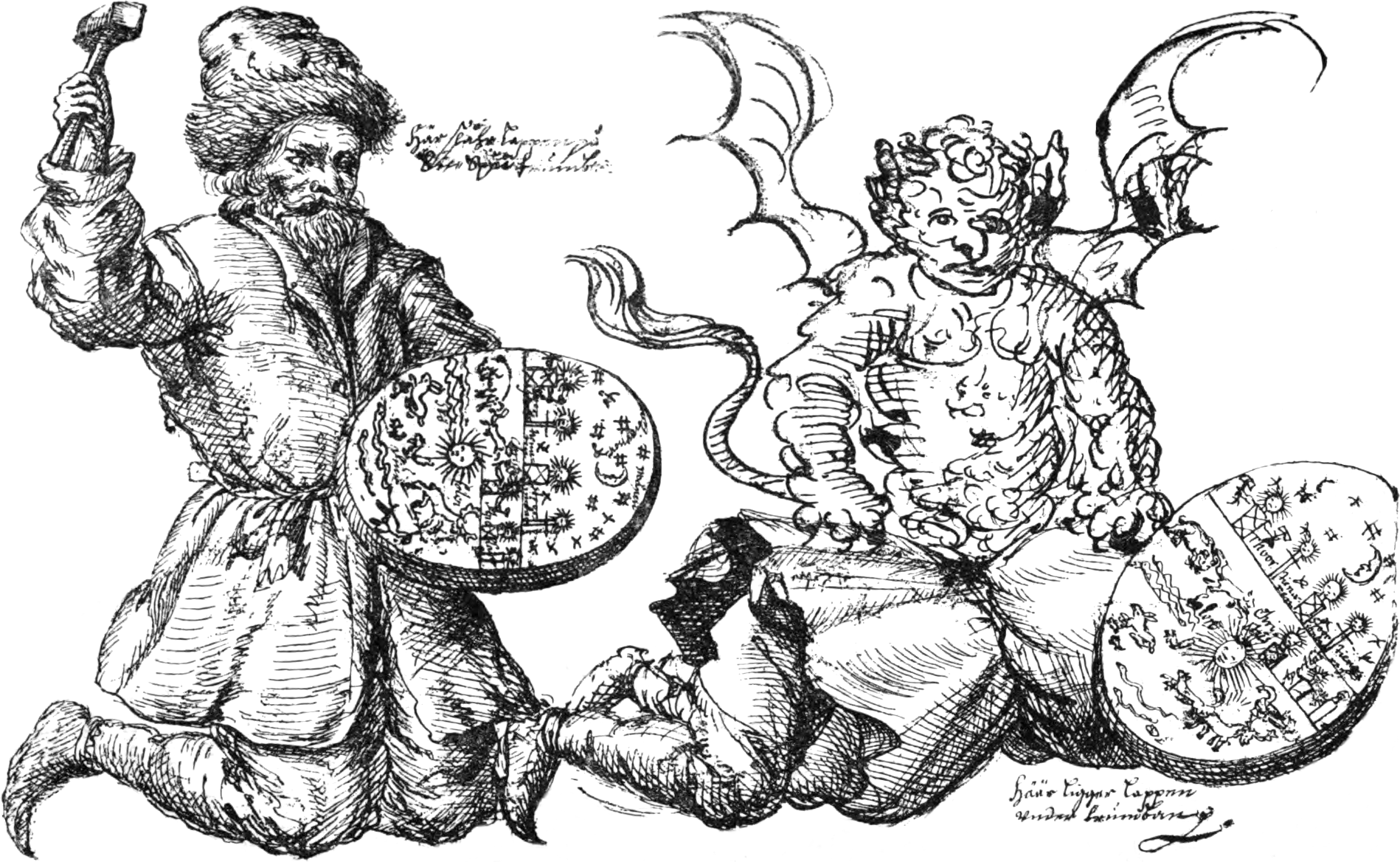

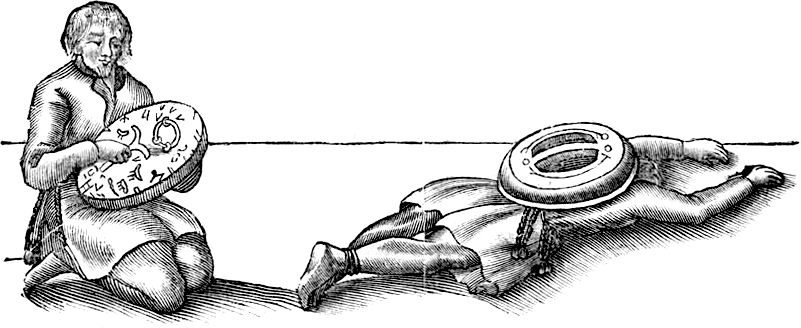
A derived illustration inserts a copy of the scene below a fairly accurate representation of both sides of a surviving drum and its accessories. Here both the drum and the accessories depicted at the top is substituted for those of the original. Apart from this obviously motivated change, the noaidi’s face is changed somewhat, and some features are added to the background. While an aesthetic improvement, the latter could possibly be said to slightly undermine the original’s intent of showing two scenes following each other in time, not space (as in a comic strip).
